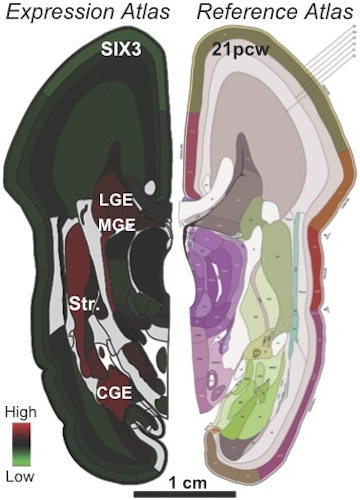First Map of Human Fetus Brain Created

A new map of the human brain during its development in the womb provides a detailed blueprint of where different genes are active at this critical stage of in a fetus' life.
This brain atlas yields clues about what makes humans distinct from other animals, and when disorders like autism first take root, researchers say.
"This is another installment in our suite of brain atlases to try to map how all genes are used across the brain and across development," said study leader Ed Lein, a neuroscientist at the Allen Institute for Brain Science in Seattle. [Image Gallery: Mapping the Brain]
The institute has previously developed maps of the developing and adult mouse brain, the developing monkey brain, and the adult human brain. The new map is the first to look at the developing human brain — specifically, the developing neocortex, the seat of higher cognitive functions, Lein told Live Science. The map is precise enough that scientists can use it to study different types of cells at various stages of development, he added.
Snapshot of a developing brain
Researchers created the map using healthy prenatal brains from a brain bank — a collection of donated human brains. The team used brain tissue with no known abnormalities or viruses such as HIV. Researchers took snapshots of brains at two different stages of prenatal development.
To measure gene activity, the researchers used a powerful tool known as a DNA microarray, which yields a quantitative measurement of the activity of every gene in the human genome simultaneously — about 20,000 genes in total.
Sign up for the Live Science daily newsletter now
Get the world’s most fascinating discoveries delivered straight to your inbox.
The team compared these gene activity results with data from other species, in particular, the mouse brain. Mice are widely used in biomedical research as a model for humans, and these maps could give scientists insight into how mice brains are similar or different from human brains, Lein said.
Researchers found some genes that were turned on in the developing human brain but not in the mouse's brain, or vice versa. For example, the developing human brain contains genes that are more active in the frontal cortex than in the corresponding part of the mouse brain. The frontal cortex is linked to personality and decision-making.
Clues to brain disorders
The map of a healthy developing brain also provides clues to the origin of developmental disorders such as autism, the researchers said. Other studies have revealed certain genes that are active in autism. Lein's team saw these genes were turned on in newly generated excitatory neurons (which activate other neurons) in the prenatal cortex, suggesting autism may start in the womb, as opposed to later in life.
Taken together, these brain maps paint a picture of where and when different genes become active in the brain. The genes encode proteins that perform all the vital tasks inside neurons, giving rise to the complex cognition of the human brain.
The Allen Institute is one of the private organizations involved in the BRAIN Initiative (Brain Research through Advancing Innovative Neurotechnologies), launched by President Obama a year ago on April 2, 2013.
All of the Allen Institute brain atlases are freely available online.
The new findings are detailed today (April 2) in the journal Nature.
Follow Tanya Lewis on Twitter and Google+. Follow us @livescience, Facebook & Google+. Original article on Live Science.










